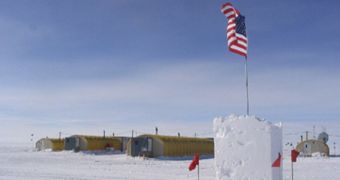Scientists with the West Antarctic Ice Sheet (WAIS) Divide project are thrilled about the fact that they are working on a study that may finally reveal the most accurate accounts of past climates on the planet. They argue that their new investigations will provide massive details about how global weather patterns shifted over the past 100,000 years. They add that this knowledge could also inform computer scientists and climatologists in devising more accurate climate models to predict future changes, Nature News reports.
“We're checking out history books made of ice,” paleoclimatologist Kendrick Taylor, from the Reno, Nevada-based Desert Research Institute, says. He is also the chief scientist for the WAIS Divide project, which is nearly three quarters of the way complete. The ice core records that will result from this effort will most likely contain a map of carbon dioxide concentrations, and an accurate record of how these concentrations shifted over the past millennia. In addition, this may also provide us with a better understanding of how humans influence the Earth's natural climate cycles. Some researchers add that this has already become apparent in ice records.
This year's drilling process was only 35 days long, on account of the poor visibility and strong wind conditions that were recorded at the WAIS Divide camp, just 1,170 kilometers away from the South Pole. The drilling heads are not at a depth of 2,561 meters, which is about 1,000 meters short of the project's final goal. But this region is so valuable precisely on account of these harsh conditions they are experiencing yearly. Precipitations accumulate here in larger quantities than they do in any other part of Antarctica, so they naturally provide a more accurate account of events in the past.
“This is simply the best spot on the planet to get the record we're looking for. This is where the library is,” Taylor says, adding that, at this particular location, there is no risk of sample contamination, as in ice flowing from other parts of the Southern Continent, and skewing the results. “We're going to get the highest-resolution, best-dated CO2 record ever. That's what gets me really excited,” Richard Alley, who is a paleoclimatologist at the Pennsylvania State University in University Park, says.

 14 DAY TRIAL //
14 DAY TRIAL //